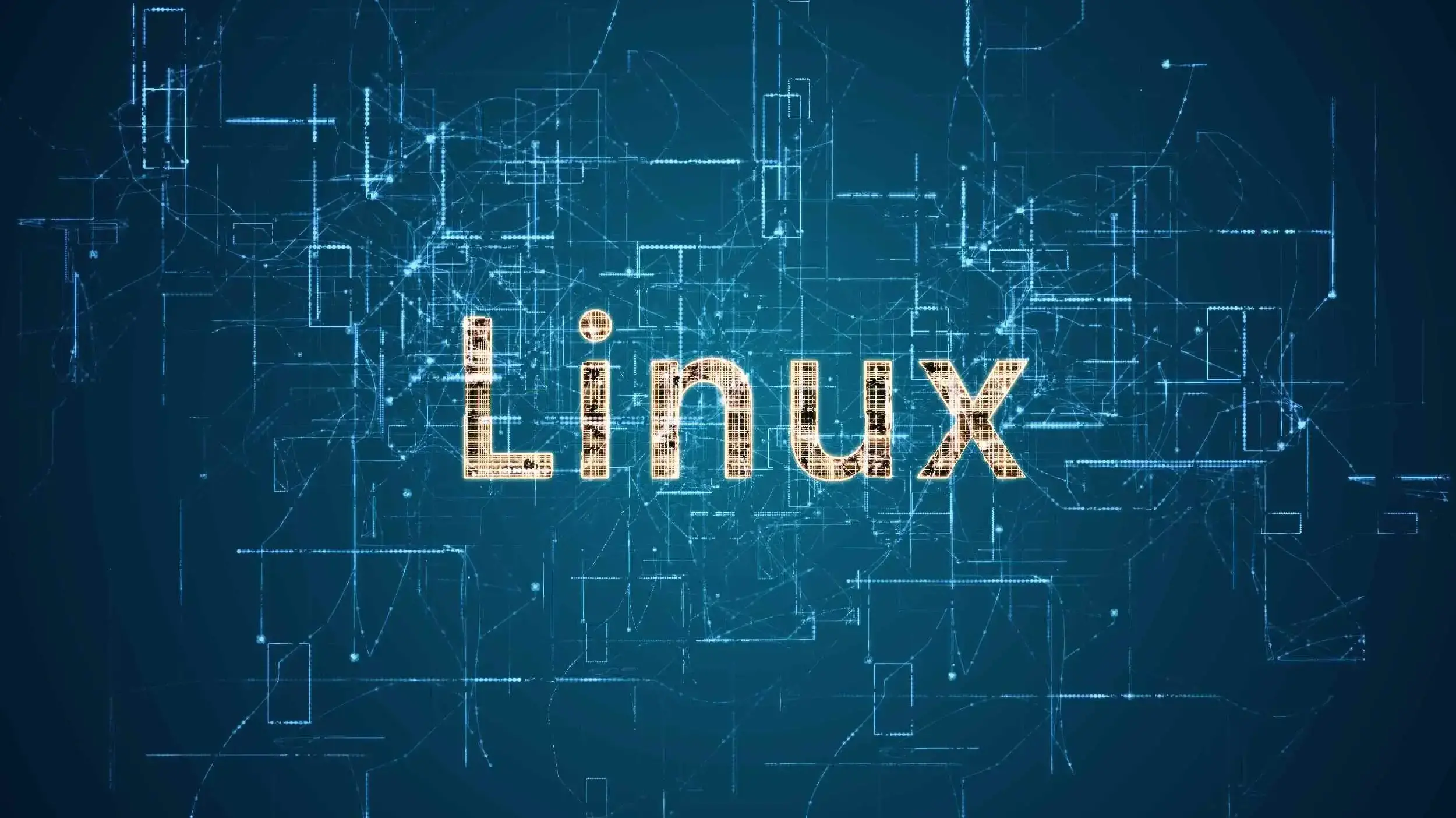To some extent, computer users are familiar with the operating system that gets their apparatus up and running, whether it is Linux, ChromeOS, Apple’s Mac, Microsoft Windows, etc.
The operating system (OS) controls how hardware components, including the CPU, RAM, hard drive, and peripherals, are connected to one another and to the Internet. It also enables the user to execute the numerous software programs that they require, such as web browsers and spreadsheets.
The OS serves as a bridge between the computer user and the computer hardware. Traditionally, files and documents are stored on the computer's hard drive; however, in today's environment, a considerable percentage of data that would normally be stored on a hard drive is now "in the cloud."
A "cloud" is a data center that has emerged as a crucial part of contemporary computing infrastructure, offering scalable and reasonably priced options for storing, processing, and handling enormous amounts of data.
Today, a lot of businesses employ cloud computing technology to store and manage their enormous amounts of data. According to respondents polled for Flexera's State of the Cloud report in 2021, 50% of respondents have their workloads in the cloud, with another 7% planning to migrate.
Cloud data centers operate through the use of virtualization technology, which allows several users to share the same physical resources without interfering with one another's work. Yet, cloud data centers, like your PCs and phones, rely on operating systems to work effectively. Let’s explore the importance of operating systems in cloud data centers and examine the most often used cloud operating systems.
Importance of Operating Systems in Cloud Data Centers
Operating systems are extremely important and play a key role in cloud data centers. Here are some reasons why;
In cloud data centers, virtualization technologies are utilized to allow multiple virtual computers to run on a single physical server. The OS is in charge of maintaining these virtual computers, including providing resources to them and keeping them segregated from one another.
Operating systems for cloud data centers must handle a wide range of services and programs, including both open-source and paid applications. A high degree of flexibility and adaptation is necessary to ensure that all programs and services function without a hitch.
The operating system is in charge of overseeing the cloud data center’s processing, memory, and storage capacities. To ensure that all applications and services running in the cloud run at top efficiency, these resources must be allocated and managed appropriately.
Automation is another feature that cloud data center operating systems provide, and it is essential for effective data center management. Automation can be used to monitor performance, scale up or down resources as necessary, and deploy new applications and services.
To safeguard the cloud data center and its contents, the operating system must have security features. This entails maintaining access control procedures, keeping an eye out for unusual activity, and making sure that all software is updated and patched against known vulnerabilities.
After analyzing the critical functions operating systems play in the cloud, let's now look at some of the most prevalent operating systems you can discover there.
Linux Operating Systems in Cloud Data Centers

Linux is the most widely used operating system in data centers and the cloud. It is an open-source operating system that has long been the preferred choice for cloud data centers.
Well-tuned Linux systems can enable low latency transactions and high throughput computing, even on commodity servers, thanks to robust networking, a full set of resource management, monitoring features, tracing capabilities, and IO stacks. Some of the primary benefits of utilizing Linux in cloud data centers are as follows:
1. Flexibility Operating Model: Linux's adaptability allows IT companies to best utilize other open-source solutions for cloud infrastructure to maximize their infrastructure. Linux is a versatile and adaptable choice because it is simple to tweak to fit the unique requirements of a cloud data center.
2. Reliable Operating System: Linux has a reputation for being dependable and stable, which makes it a great option for cloud data centers that demand high availability. Its solid functioning model produces a time-saving, dependable, and adaptable flair.
With a few exceptions, the command line, process management, and fundamental network administration are nearly identical regardless of the version or distribution of Linux you use, and software may be transferred simply between distributions.
3. Open Source Development Model: With extensive acceptance across industries and cutting-edge technology, Linux is regarded as one of the best operating systems for cloud-based systems. The Linux kernel has received incredible contributions from 15,600 engineers working for more than 1,400 organizations since 2005. The community and network have benefited and have been optimized thanks to its open-source innovation.
4. Security and Full-featured Networking: Linux is known for being a secure operating system, which is essential for cloud data centers that handle sensitive data. It offers a robust set of networking features, including networking tools for managing and supplying routes, bridging, DNS, DHCP, network troubleshooting, virtual networking, and network monitoring.
Popular Linux Distributions Deployed in Cloud Data Centers:
1. Red Hat Enterprise Linux (RHEL): Provides quick and easy access to dependable cloud OS images, as well as the toolchains, libraries, container tools, and runtimes required to simplify the route from development to production in public, private, multi-cloud, and hybrid clouds. It is supported by all major cloud providers and cloud markets, including Microsoft Azure, Amazon Web Services (AWS), Google Cloud Platform, IBM Cloud, and Alibaba Cloud.
2. Ubuntu: Offers outstanding support for newer hardware and is a fantastic option for users. It offers features like the ability to swiftly spin up whole OpenStack and Kubernetes deployments, as well as Metal-as-a-Service (MAAS) capabilities that let you provision actual servers by booting them into an installation image.
3. CentOS: CentOS aims to keep Red Hat Enterprise Linux's binary compatibility at 100%. It is a platform with rock-solid stability that is predictable, manageable, and reproducible that was derived from Red Hat Enterprise Linux's sources (RHEL). Its open-source operating system offers a computing platform suitable for businesses.
A few deserving mentions are Alma Linus and Rocky Linus, Suse, and Debian Stable. The best distribution is the one that enables you to meet your personal or professional objectives. In actuality, all distributions are worth exploring, but every distro has some aspects that stand out above the rest.
Microsoft Azure Operating Systems in Cloud Data Centers
Microsoft's public cloud computing platform is called Microsoft Azure, formerly known as Windows Azure. It is another widely used operating system that is run by Microsoft and is utilized in cloud data centers. With distributed centers all across the world, it offers application and service access, management, and development. Software as a service (SaaS), platform as a service (PaaS), and infrastructure as a service (IaaS) are just a few of Microsoft Azure's many features. It also supports a wide range of programming languages, tools, and frameworks, as well as Microsoft- and third-party-specific applications and systems. More than 500 services are offered by Azure, which are broken down into different areas including, computer services, networking, the Internet of Things [IoT], migration, data management, and more. The following are some benefits of utilizing Microsoft Azure in cloud data centers:
1. Scalability: The flexibility and adaptability of Azure services to automatically grow to meet application consumption requirements are one of their wonderful characteristics. Scalability refers to the system's ability to adapt to changes in workload or traffic to the web application.
Azure Cloud Services make use of physical infrastructure spread across all continents. This speeds up access while also allowing for replication in circumstances where businesses desire to extend their business operations.
2. Analytics Program: With the support of Azure analytics services, you can utilize the entire range of your data assets to create innovative and secure business-scale analytical solutions. Its technology stack includes built-in analytical tools for shaping and visualizing data for better decision-making.
You can quickly implement solutions for business intelligence and reporting, sophisticated analytics, and real-time analytics using fully-managed services like Azure Synapse Analytics, Databricks, and so on.
3. Data Security: Microsoft draws on decades of experience as a leading provider of enterprise operating systems and productivity solutions to safeguard all information hosted in its Azure cloud products and services. Azure offers customers high data protection by default and as a customer option. Azure Key Vault enables businesses to effortlessly keep control of keys used to encrypt data by cloud apps and services. Customers can encrypt VMs using Azure Disk Encryption.
4. Disaster Recovery: Businesses can impose particular data types and recovery criteria using Microsoft Azure. Azure provides an easy-to-use, secure, scalable, and affordable end-to-end backup and disaster recovery solution that can be linked with on-premises data protection systems.
Companies may develop recovery plans using the Azure Site Recovery tools like replication, failover, and failback protocols from a single location. The cloud-native, highly available, resilient, and easy-to-construct Azure backup and disaster recovery solution. Additionally, it enables businesses to create and manage load balancers, reserve IP addresses for apps, and integrate Azure Traffic Manager for smooth network transitions.
5. Cloud Security and Safety: All business data is safeguarded by a variety of security solutions and architecture implementations as part of the Microsoft Azure Cloud Security Center.
The unified infrastructure security management system of Azure Security Center improves the security posture of your data centers and offers enhanced threat protection for all of your hybrid cloud workloads, whether they’re in Azure or not—as well as on-premises. These threat monitoring agents produce threat intelligence reports and real-time security warnings that include details on attackers' motives and methods.
6. Pipeline for Integrated Delivery: An Azure setup is easier and has less of a disruptive impact for the majority of businesses.
A Git repository for managing your application's source code and infrastructure code (ARM templates), a build system for creating packages and other build artifacts, and a release management system for setting up a pipeline to deploy your changes through development, testing, and production environments make up the CI/CD pipeline offered by Azure DevOps. The technology additionally offers direct communication with Office365 and intricate integrations with outside applications via an API.
Popular Microsoft Distributions Deployed in Cloud Data Centers:
1. Windows Server: This is the most common operating system for Azure virtual machines. The majority of IT professionals are familiar with it, and it provides a dependable and flexible platform for hosting applications and services. It also supports a variety of workloads, including web servers, databases, and application servers.
The data center Windows Server Edition is the best choice for comprehensive virtualization since it enables one server to run an endless number of Windows Server instances.
2. SQL Server: Users can deploy and administer SQL Server instances in the cloud using Azure's fully managed SQL Server database service. Data warehousing, business intelligence, and relational and non-relational databases are just a few of the workloads supported by SQL Server.
It is a great alternative for businesses looking for a dependable database management system because of its scalability, security, performance, and manageability features.
3. Azure Kubernetes Service (AKS): a fully managed Kubernetes service, that enables users to launch, scale, and oversee containerized applications in the cloud. It provides the easiest approach to begin creating and delivering cloud-native apps in Azure, datacenters, or at the edge thanks to its integrated code-to-cloud pipelines and safeguards.
4. Apache Hadoop: Apache Hadoop clusters can be deployed and maintained in the cloud using Azure's HDInsight service, which is a fully managed Hadoop offering. Big data and analytics workloads are frequently run on Hadoop.
Support for integration with Azure Blob Storage is provided through the Hadoop-azure module. It also defines transitive dependencies on the other components it needs, most notably the Azure Storage SDK for Java, in the produced jar file entitled Hadoop-azure.jar.
Container-based Operating Systems in Cloud Data Centers
Operating system virtualization is a type of containerization. This operating system stands out because it is software that is distributed using containers, rather than just software that supports containers. Anything from a small microservice or software process to a huge application could be operated inside a single container.
All required executables, binary code, libraries, and configuration files are contained inside a container. Nevertheless, operating system images are not present in containers, unlike server or machine virtualization methods. As a result, they become substantially more portable and lightweight. In larger application deployments, several containers may be deployed as one or more container clusters.
They provide an efficient means of creating, testing, deploying, and redeploying applications across a variety of platforms, from a developer's local laptop to an on-premises or cloud data center. The following are some benefits of utilizing container-based operating systems in cloud data centers:
1. Higher effectiveness: They can manage a lot of traffic without sacrificing performance because they are very scalable. Containers enable faster scaling, patching, and deployment of applications.
2. Reduced overhead: Because container-based operating systems are resource-efficient and light, they are a practical choice for cloud data centers. Containers consume fewer system resources than traditional or hardware virtual machine environments since they don't contain operating system images.
3. Effective application development: Agile and DevOps initiatives to speed up the development, test, and production cycles are supported by containers.
4. Reliable Performance: DevOps teams are aware that apps running in containers will function the same wherever they are deployed.
5. Higher portability: It is simple to swiftly deploy programs to a range of hardware platforms and operating systems when they are running in containers. Containers are a great option for cloud data centers that need flexibility since they can be quickly moved between various environments.
Popular Container-based Distributions Deployed in Cloud Data Centers:
1. RancherOS: This is a strong and adaptable operating system that is perfect for managing contemporary infrastructure and executing containerized applications. It is used to create an extremely compact Docker host that can function on hardware with very low specifications.
RancherOS uses a container-based architecture for maintaining the operating system itself, which is one of its distinctive features. As a result, the operating system is handled as a collection of manageable containers that can be quickly upgraded and maintained using common container management tools. This is also a flexible alternative for deploying modern applications because it comes with tools for managing containerized infrastructure and applications. It may be used with bare metal, virtual machines, and cloud environments.
2. Photon OS: This is a lightweight Linux container host that was developed and optimized for VMware platforms, while it can also be used in other contexts. Users have access to a command line interface and a limited number of packages with Photon OS.
The simple design of Photon OS, which is based on the Linux kernel, lowers the attack surface and resource needs of the operating system. Usually, less than 100MB of memory is needed to operate the default installation. With a focus on security and performance and a small installation footprint, Photon OS is made to be simple to use and manage. It includes a number of built-in security features, such as support for SELinux and AppArmor.
Summary
Moving to the cloud is a complicated process since there are so many variables at play; this is particularly true when migrating to hybrid and multi-cloud settings. New interactions and numerous integrations regularly increase the complexity of management. The right operating system must be chosen in order for a cloud data center to run smoothly and successfully.
You could compare it to picking the ideal outfit for a job interview because it has the power to make or break the whole thing. The performance, security, and financial viability of the cloud data center can all be improved by choosing the correct operating system.
There are many operating system choices, and each has its advantages and disadvantages. For example, a variety of jobs can be completed with ease with Linux since it is flexible and adaptable.
On the other hand, Windows is strong, polished, and perfect for handling complex operations. It is crucial to have an OS that offers the capabilities and establishes the permissions necessary to ensure that your core applications and web ones run at their best whenever you need them, in real-time. This is because vital enterprise workloads are increasingly moving to the cloud and because it offers a shrewd, reliable, and security-focused foundation for adaptable business operations in the cloud, many organizations use it to manage their cloud systems.
Container-based operating systems have become a popular option in recent years. They are adaptable, lightweight, and perfect for running several applications at once. As with different clothes' styles and fits, each option has its own set of prerequisites and restrictions, so it's crucial to keep this in mind. In the end, the particular requirements and objectives of the cloud data center will determine which operating system is best.
Frequently Asked Questions
How fast is your cloud hosting service?
We’re well known for the speed of our web hosting. Our team is constantly developing new features.
Does the data center location matter?
Sometimes. You Should try and find a host close to the geographic location your customer base is in. This should mean your site will load more quickly.
Will the data center location affect speeds?
Yes. Generally, the closer you are to where your data is hosted, the faster your website will be.
Can I buy and sell a domain from Verpex?
No, you can not buy and resell a domain from Verpex

Jessica Agorye is a developer based in Lagos, Nigeria. A witty creative with a love for life, she is dedicated to sharing insights and inspiring others through her writing. With over 5 years of writing experience, she believes that content is king.
View all posts by Jessica Agorye






















